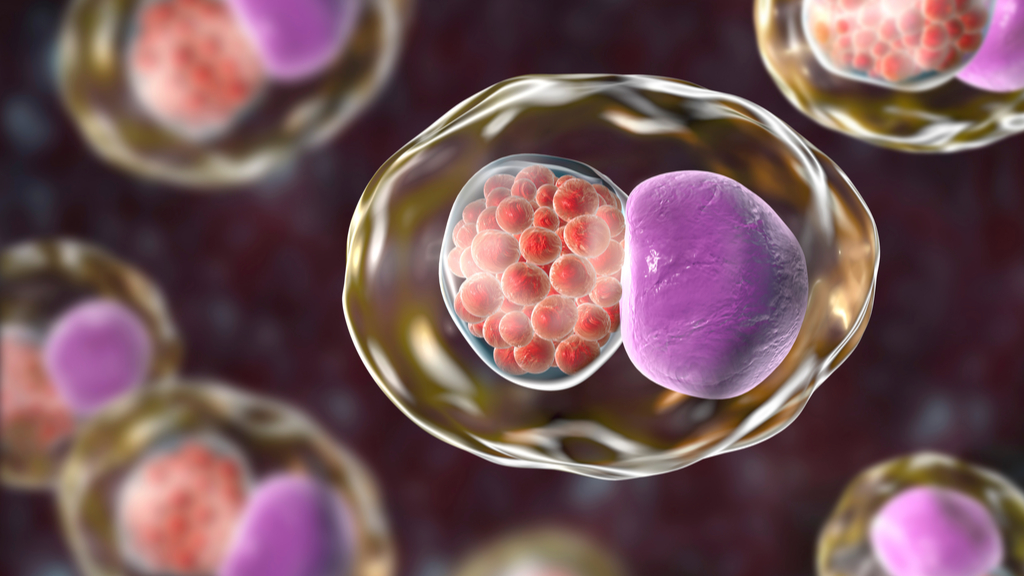Chlamydia cousin discovered in deep Arctic Ocean
The newfound bacteria might shed light on how chlamydia came to infect host organisms, like us.

Deep under the Arctic Ocean seafloor lurks several newfound species of chlamydia bacteria. The species, cousins to the one that causes the sexually transmitted infection (STI), seem to survive despite a lack of oxygen and obvious hosts to prey upon, new research suggests.
Chlamydia is the most commonly reported STI in the U.S., with an estimated 2.86 million infections occurring each year, according to the Centers for Disease Control and Prevention. The specific bacterium that triggers the disease, Chlamydia trachomatis, belongs to a large group of related microbes collectively known as Chlamydiae, many of which depend on host organisms to survive.
But now, scientists have unearthed a slew of Chlamydiae bacteria living about 2 miles (3 kilometers) beneath the surface of the Arctic Ocean, growing several feet below the seafloor sediment. Although subjected to intense pressure and largely deprived of oxygen, the microbes grow in abundance and even seem to dominate certain patches of the seafloor.
"Finding Chlamydiae in this environment was completely unexpected, and of course begged the question what on earth were they doing there?" lead author Jennah Dharamshi, a graduate student studying microbial diversity and evolution at Uppsala University in Sweden, said in a statement.
The study, published March 5 in the journal Current Biology, could help reveal how Chlamydiae bacteria first evolved to become infectious, the authors noted. In particular, one diverse group of Chlamydiae found lurking in the frigid ocean appeared closely related to chlamydia that cause disease in humans and other animals.
Dharamshi and her colleagues discovered this bounty of bacteria by collecting samples of sediment near Loki's Castle, a collection of hydrothermal vents located between Iceland, mainland Norway and the Norwegian Svalbard islands to the north. The team surveyed all the genetic material contained within the muck. The newfound Chlamydiae bacteria don't appear to rely on host organisms to survive, like their pathogenic cousins, but they may sap resources from other microbes living nearby, the authors said.
"Even if these Chlamydiae are not associated with a host organism, we expect that they require compounds from other microbes living in the marine sediments," senior author Thijs Ettema, a professor of microbiology at Wageningen University in the Netherlands, said in the statement. "This group of bacteria could be playing a much larger role in marine ecology than we previously thought," co-author Daniel Tamarit, a postdoctoral researcher in Ettema's lab, said in the statement.
Sign up for the Live Science daily newsletter now
Get the world’s most fascinating discoveries delivered straight to your inbox.
The researchers hope to grow these microbes in the lab, but because "the environment they live in is extreme, without oxygen and under high pressure, this makes growing them a challenge," Ettema said. Studying them in the lab could reveal how the ancient group of bacteria came to infect animals, plants, fungi and microorganisms the world over, the authors noted in their paper.
- 10 things you need to know about Arctic sea ice
- Evolution and your health: 5 questions and answers
- 6 superbugs to watch out for
Originally published on Live Science.
OFFER: Save at least 53% with our latest magazine deal!
With impressive cutaway illustrations that show how things function, and mindblowing photography of the world’s most inspiring spectacles, How It Works represents the pinnacle of engaging, factual fun for a mainstream audience keen to keep up with the latest tech and the most impressive phenomena on the planet and beyond. Written and presented in a style that makes even the most complex subjects interesting and easy to understand, How It Works is enjoyed by readers of all ages.

Nicoletta Lanese is the health channel editor at Live Science and was previously a news editor and staff writer at the site. She holds a graduate certificate in science communication from UC Santa Cruz and degrees in neuroscience and dance from the University of Florida. Her work has appeared in The Scientist, Science News, the Mercury News, Mongabay and Stanford Medicine Magazine, among other outlets. Based in NYC, she also remains heavily involved in dance and performs in local choreographers' work.










